As in, you cut it up into scale ties and spike your track into it? Can you even cut up Trex that small?
Yes and no but not exactly John. I’ll let the experts chime in here.
Don’t do it!
Without it’s thin candy shell it will melt,
no that’s not it,
without it’s thin membrane shell it will deteriorate and crumble.
Ties and cribbing too.
Worse was trying to bend some in the ladder system …I had to use washers like this;

to prevent screws from pulling through…
My $20 boards all made it into the trash.
John Caughey said:
Don’t do it!
All depends on the “TREX” material chosen John .
All of my hand built turnouts sit on ties of trex like material. which I cut on a table saw.
The ties will easily break if you try bending them, but after staining and placed under turnouts on gravel they tend to wear well.
Some of the turnouts that use these ties have been outdoors for 10 years or more.
Stan
I started using trex ties about five years ago and won’t go back. Biggest selling point for me was I no longer have spike popping problems. I have used them on solid trex bases for switches and on ladder made with vinyl trim boards. I do predrill spike holes and have always used stainless steel spikes. (I originally used PT ties, the old type with arsenic and they would completely dissolve steel spikes in a year or two) I have found that stain really doesn’t last on them as it really only stains the the wood content, not the plastic but they look like aged gray ties to begin with so I don’t consider that a real issue.
You didn’t mention the size you would be milling them to and that could be an issue. Anything I mill is 1/2" wide and for everything except bridge ties I leave them in the 3/4" thick dimension that the stock I use comes in. This saves cutting both dimensions and provides more depth for ballast. 1/2" x 1/2" bridge ties have not been an issue but it you are going to do a scale size in say 1/29 there might be some strength issues depending on what you are using for a base to mount them on.
I didn’t do ties, but I did cribbing with Trex. I had to predrill and countersink the holes for the stainless steel screws, that I used to hold the planks together. It will crush or crumble when ripped to a small size if you aren’t careful withe the spikes or screws, so predrilling is a must. My cribbing has outlived the bridge it was made for and is now supporting a new bridge. So I would guess its been out there for a decade or so.
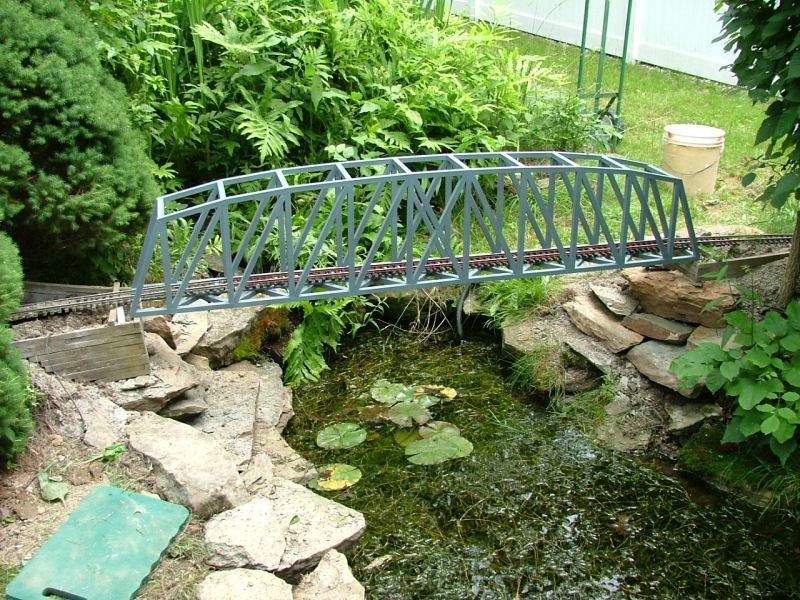
do not use trex or its derivatives, they break down , they will expand and contract, swell up with moisture etc.
a much better solution is to use PVC deck boards. they are very expensive, as they are only sold around hear as 12 or 16’ lengths.
I have used this for turnout ties. they stay flexible, the only way they get a little brittle is if you glue them down with PVC cement, as I have PVC for the turnout base as well. if you use the white cellular PVC like that sold at HD and others, several coats of paint are in order to provide UV protection.
personally I support a US manufacture and use MIcro engineering ties for other than turnouts. I use code 250 but code 332 is available as well.
AL P.
What John and Al said
Trex is a trademarked brand, and is plastic with sawdust with a skin. Like John says, break the skin and you lose weather resistance.
I’ve used the solid plastic lumber and it lasts, I think it was solid polypropylene, been 10 years with it sitting on the ground and it looks new.
Greg
Well then I guess I must be delusional and the ties in this photo which have been out in the elements in south central Ohio for the past five years are disintegrating and I’m just not seeing it (https://www.largescalecentral.com/externals/tinymce/plugins/emoticons/img/smiley-undecided.gif)
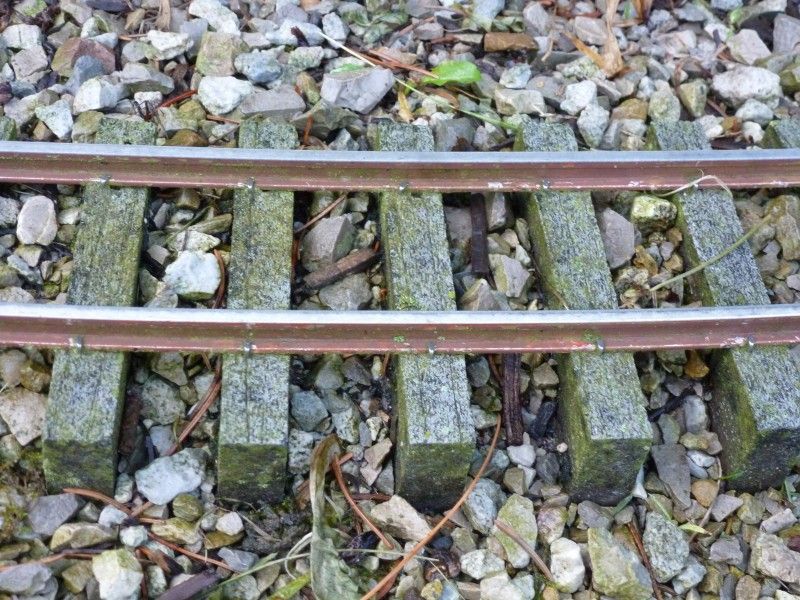
The green is moss and the black a combination of residual stain and black mold. We had the wettest year on record last year and are ahead of that so far this year so much of what is outside, plastic, wood or otherwise has coat of green or black on it if it doesn’t get much direct sun.
A couple of notes, I don’t consider myself an expert on composite decking, I’m only relating my experience to date. If you reread my original post you will notice I did not capitalize “trex” using the term in the same manner as calling facial tissues kleenex or a copy from a copy machine a xerox.
Also, composite decking (hereafter referred to as “trex”) did not always have the outer skinning. I used it on two decks that I built over 15 years ago and at that time it did not have the “skin” found on the current product. The only downside I have seen with it is that it is susceptible to staining from mold and moss, like the photo above and if you want it to look like new must be pressure washed periodically. While some what annoying it has not affected the decking other than to abrade the surface which actually makes it less slippery when went wet than the newer stuff, other than that the decks are still quite sound.
I’m not quite sure why the product would swell any more than real wood when wet as the only wood exposed to the environment is that on the surface when cut, the rest is encapsulated in plastic. Any expansion would seem to me to be more a result of the normal expansion of the plastic itself due to heat. Perhaps a real eggspurt and fill me in on this.
One other comment related to “solid vinyl” materials, I am currently using “solid” vinyl trim boards (brand name Trimplank or some such) for my ladder construction and solid is some what of a misnomer. When cut while the outside skin is solid the inside core is more like a foam core similar to foam core drainage pipe. It is fine for what what I’m using it for but if you try ripping it lengthwise into a smaller cross section you are in for a surprise. Once the outer skin has been cut off of one side it’s like tension has been relieved and the the pieces take on some unusual shapes, none of which are straight. I tried this early on as it appeared to be less expensive to buy a piece double the width I needed and rip it down. What I ended up with were two pieces that would have made good rockers for a rocking chair but worthless for my purpose.
Finally it all comes down to what works in your climate and your methods. Back in 2000 when I build my main yard using PT plywood and PT ties the naysayers said it won’t last and that I was wasting my time.
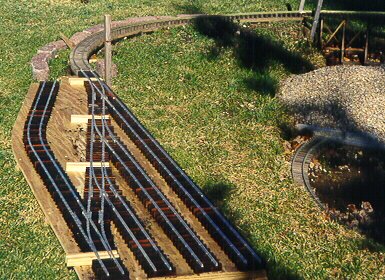
Flash forward 19 years

And its all still quite sound and has required relatively little in the way of maintenance over the years, the ties have been re stained a couple times and a few ties replaced but otherwise all is good for at least a few more years anyway. Of course back then you could still get reasonably flat pieces of PT plywood and all PT sold was rated for ground contact unlike the green tinted crap the big box stores sell these days thanks to the environmentalists !
Your experiences may vary but I think trex, as long as it is not used for structural purposes is fine for things like ties.
Sounds like “trex” is not specific enough, clearly Gary has found stuff that works, but he does mention stuff with a skin that did not “work”, and he has seen “solid” stuff that is not solid, and I have solid stuff that is really solid with no foamy holes inside and way heavier than real wood.
So, if I have a takeaway, no skin on your “brand” of “trex” gives you the best chance of success. Avoid the skinned stuff.
Greg
Clearly no one pays much attention to my posts on different materials used over the years. Kinda a shame as you might learn something if you did. Yes, Greg you are correct along with others about Trex “COMPOSITE” decking. This is why I posted like I did originally. I’m sure what Gary is using even if it is Trex (which IS a manufacturer name like SINTRA) their fascia board like most other MANUFACTURES are solid PVC or the like. Not COMPOSITE which is like an M&M hard skin coating on the outside and mushy compressed material on the inside.
I just made ties out of AZEK TRIM BOARD NOT COMPOSITE DECKING for the electric motor car I built for the museum. Granted those ties will not be outside to the elements but they are the PVC material and NOT composite.
The pics in the thread are gone but it’s been outside for 10yrs now with full ground contact and no issues.

Ah ha! I get it. No composites, like Trex. PVC trim board is the way to go!
I apologize to the previous poster for not remembering his post from 3,842 days ago (or 331,948,800 seconds, or 5,532,480 minutes, or 92,208 hours, or 548 weeks and 6 days) covering this issue.
edit…and counting…
" Rooster " said:
Clearly no one pays much attention to my posts…
Well Greg that’s not what I said but if that’s the take away then my communication skills have deteriorated since I retired. I have used both skinned and not skinned composites and noticed no difference in them as far as durability or suitability for the task.
I have never been one to follow the crowd on building methodologies and not all of my experiments have been successful. Only sharing my experience as an alternative to other methods. At this time in my life I figure anything that will last another ten years may well out live me and I figure by the time I reach 81 I may not be willing or able to maintain an outdoor layout anyway.
I started looking at decking material as a source for ties several years ago. All of the composites decompose sooner or later. Solid or cellular PVC trim boards would work well but, unless you custom order a tractor trailer load, it only comes in white and does not hold stain or paint very well.
Recently I discovered a recycled plastic material out of Texas called Rumber:
This stuff appears resistant to almost everything, but certainly to moisture and ground contact (look at the list of applications). I ordered several pieces of it to play with. The stuff weighs a ton and even in thick cross section (2.5" x 7") it will bend under its own weight if supported at more than 16" on center. It cuts easily enough with carbide tipped saw blades. Haven’t tried driving spikes into tie sized chunks yet - some are still soaking in a bucket of water how much they absorb and others have been buried in my wife’s well-watered flower garden to see if they to degrade - but I suspect predrilling might be necessary.
As I said, it is heavy and shipping can be a killer (to UPS $45 of product cost $57!) so check to see if they have a distributor near you. It is also popular as flooring for horse and livestock trailers, so you might check local companies that build/rebuild such things to see if they have any cutoffs laying around (I bet a case of beer would get you a pickup truck load).
Gary, there is a fine distinction in what I said, and I used “work” in quotes on purpose, as the non-skinned stuff you used was susceptible to mold and mildew… and you DID say just that.
My definition of “work” was acceptable performance AND appearance. Mold and mildew is not acceptable to me.
Sorry my attempt to distill down all the posts seemed to twist your words. Just like my post in another thread where another person keeps coming up with exceptions to the usual case, when you do try to “boil it down” it often cannot be 100% perfect.
Greg
Greg, mold and mildew aren’t acceptable to those, like you, that want to portray min-line operations. Those of us who are doing a shoestring narrow gauge line, mold and mildew may not be so objectionable. It all depends on the desired effect.
Thought it would be useful to post a couple photos.
All our hand built turnouts use plastic/wood composite ties. This one was put in sometime before 2003. The composite material was purchased from Lowes and cut on a table saw. The turnout does not look much different now then it did when it went in.
Stan
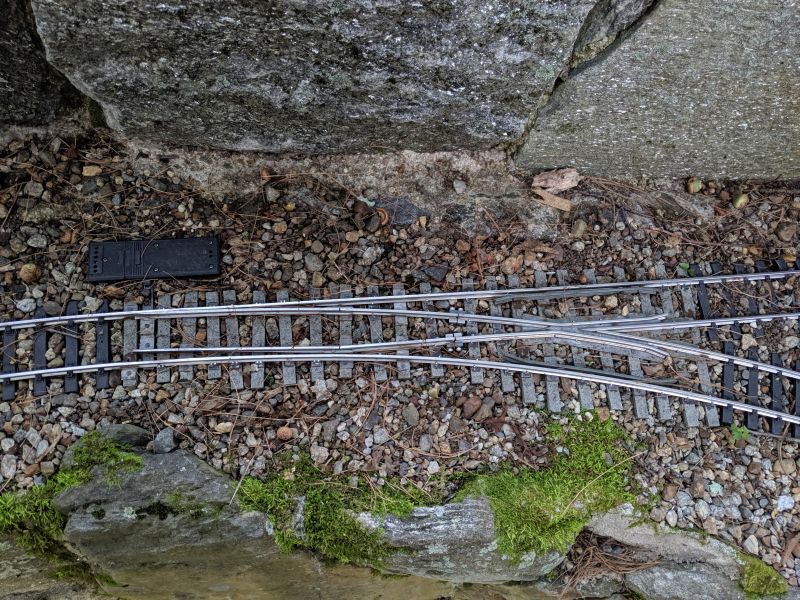
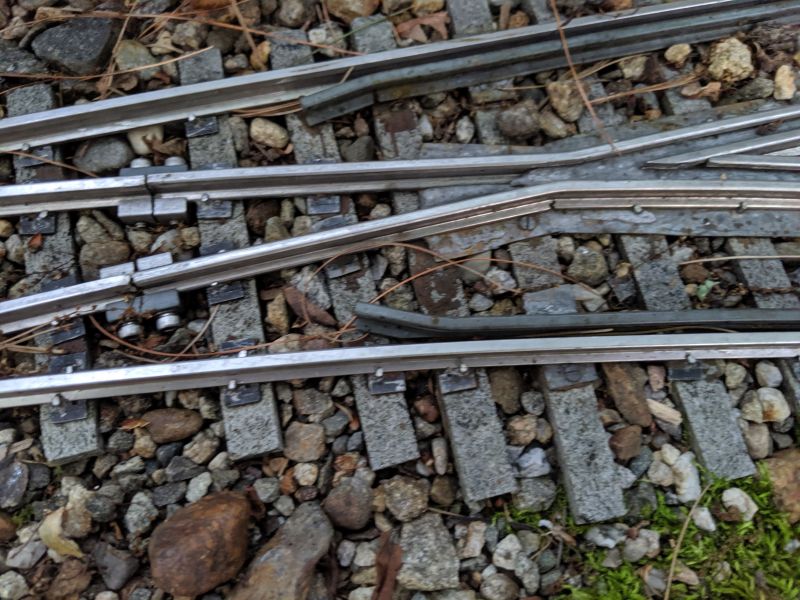
" Rooster " said:
…
That arched bridge is great. I want one.